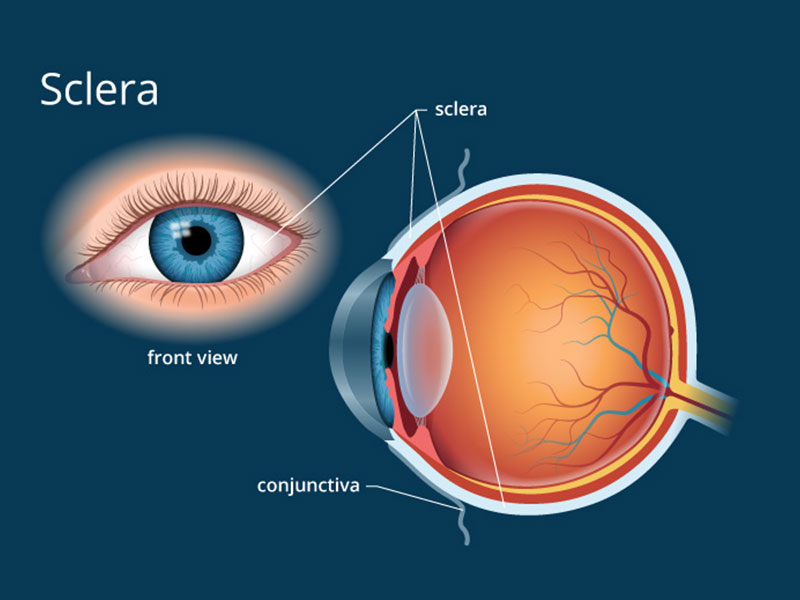Sclera
Sclera is a part of the eye & generally known as the “white.” It will form a supporting wall of the eyeball, & is continuous with the clear cornea. In humans, the entire sclera is white contrast with coloured iris, but in the other mammals the visible part of the sclera will equivalent to the colour of the iris, by that white part won’t generally seen. In the embryo development, the sclera is derived from the neural crest. In children, it is thinner & shows some of the underlying pigment, which will appear slightly blue. In elder persons, the fatty deposits on the sclera will make it appear as slightly yellow.
The sclera is covered by conjunctiva, a clear mucus membrane which help to lubricate the eye. It is thickest in the area around the optic nerve.
The sclera is made up of three divisions:
- Episclera - Loose connective tissue, right away beneath the conjunctiva.
- Sclera proper - The dense white tissue which gives the area its color
- Lamina fusca - The innermost zone made of elastic fibers.
There are a number of abnormalities which are related with the sclera. Some are genetically related abnormalities that may includes:
- Melanosis - Excess deposits of the melanin pigment on the surface of sclera, which may become inflamed & uncomfortable.
- Scleral Coloboma - Missing tissue which will results in the notching & bulging of the sclera (lesions)
- Ectasia - A thinning & bulging of the sclera
Acquired abnormalities of sclera which may includes:
- Ectasia - That may be brought on as a side effect from traumas or inflammations
- Episcleritis - A hypersensitivity reaction that will be anterior or posterior, which was characterized by engorged blood vessels, & may also affect the cornea.











 I am Nimitha, before Lasik, I am very difficult to see and difficult to handle contact lens and specs. After the lasik treatment I am very relaxed.
I am Nimitha, before Lasik, I am very difficult to see and difficult to handle contact lens and specs. After the lasik treatment I am very relaxed. 